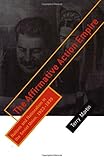The Affirmative Action Empire : Nations and Nationalism in the Soviet Union, 1923-1939 / Terry Martin.
Material type: TextSeries: The Wilder House series in politics, history, and culturePublisher: Ithaca, NY : Cornell University Press, [2017]Copyright date: ©2001Description: 1 online resource (528 p.) : 47 tables, 4 mapsContent type:
TextSeries: The Wilder House series in politics, history, and culturePublisher: Ithaca, NY : Cornell University Press, [2017]Copyright date: ©2001Description: 1 online resource (528 p.) : 47 tables, 4 mapsContent type: - 9780801438134
- 9781501713323
- 947.084/2
- JN6520
- online - DeGruyter
- Issued also in print.
| Item type | Current library | Call number | URL | Status | Notes | Barcode | |
|---|---|---|---|---|---|---|---|
 eBook
eBook
|
Biblioteca "Angelicum" Pont. Univ. S.Tommaso d'Aquino Nuvola online | online - DeGruyter (Browse shelf(Opens below)) | Online access | Not for loan (Accesso limitato) | Accesso per gli utenti autorizzati / Access for authorized users | (dgr)9781501713323 |
Browsing Biblioteca "Angelicum" Pont. Univ. S.Tommaso d'Aquino shelves, Shelving location: Nuvola online Close shelf browser (Hides shelf browser)

|

|

|

|

|

|

|
||
| online - DeGruyter Conventional Deterrence / | online - DeGruyter The UAW and the Heyday of American Liberalism, 1945–1968 / | online - DeGruyter "Strong of Body, Brave and Noble" : Chivalry and Society in Medieval France / | online - DeGruyter The Affirmative Action Empire : Nations and Nationalism in the Soviet Union, 1923-1939 / | online - DeGruyter The Tet Offensive : Intelligence Failure in War / | online - DeGruyter Inequality and Prosperity : Social Europe vs. Liberal America / | online - DeGruyter Liberalism Disavowed : Communitarianism and State Capitalism in Singapore / |
Frontmatter -- Contents -- List of Tables and Maps -- Acknowledgments -- Footnote Abbreviations -- A Note on Style -- 1. The Soviet Affirmative Action Empire -- PARTONE. lmplementing the Affirmative Action Empire -- 2. Borders and Ethnic Conflict -- 3. Linguistic Ukrainization, 1923-1932 -- 4. Affirmative Action in the Soviet East, 1923-1932 -- 5. The Latinization Campaign and the Symbolie Polities of National Identity -- PART TWO. The Political Crisis of the Affirmative Action Empire -- 6. The Polities of National Cornmunism, 1923-1930 -- 7. The National Interpretation of the 1933 Famine -- PART THREE. Revising the Affirmative Action Empire -- 8. Ethnie Cieansing and Enemy Nations -- 9. The Revised Soviet Nationalities Policy, 1933-1939 -- 10. The Reemergenee of the Russians -- 11. The Friendship of the Peoples -- Glossary -- Bibliography -- Index
restricted access online access with authorization star
http://purl.org/coar/access_right/c_16ec
The Soviet Union was the first of Europe's multiethnic states to confront the rising tide of nationalism by systematically promoting the national consciousness of its ethnic minorities and establishing for them many of the institutional forms characteristic of the modern nation-state. In the 1920s, the Bolshevik government, seeking to defuse nationalist sentiment, created tens of thousands of national territories. It trained new national leaders, established national languages, and financed the production of national-language cultural products.This was a massive and fascinating historical experiment in governing a multiethnic state. Terry Martin provides a comprehensive survey and interpretation, based on newly available archival sources, of the Soviet management of the nationalities question. He traces the conflicts and tensions created by the geographic definition of national territories, the establishment of dozens of official national languages, and the world's first mass "affirmative action" programs. Martin examines the contradictions inherent in the Soviet nationality policy, which sought simultaneously to foster the growth of national consciousness among its minority populations while dictating the exact content of their cultures; to sponsor national liberation movements in neighboring countries, while eliminating all foreign influence on the Soviet Union's many diaspora nationalities. Martin explores the political logic of Stalin's policies as he responded to a perceived threat to Soviet unity in the 1930s by re-establishing the Russians as the state's leading nationality and deporting numerous "enemy nations."
Issued also in print.
Mode of access: Internet via World Wide Web.
In English.
Description based on online resource; title from PDF title page (publisher's Web site, viewed 02. Mrz 2022)


